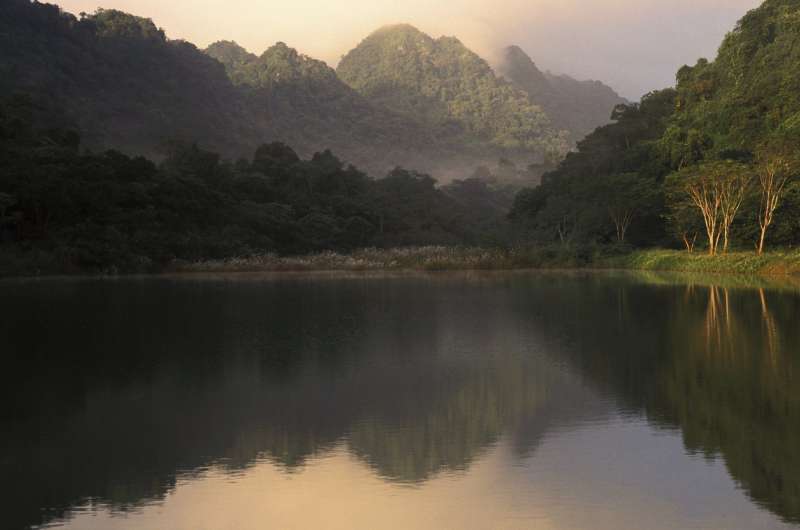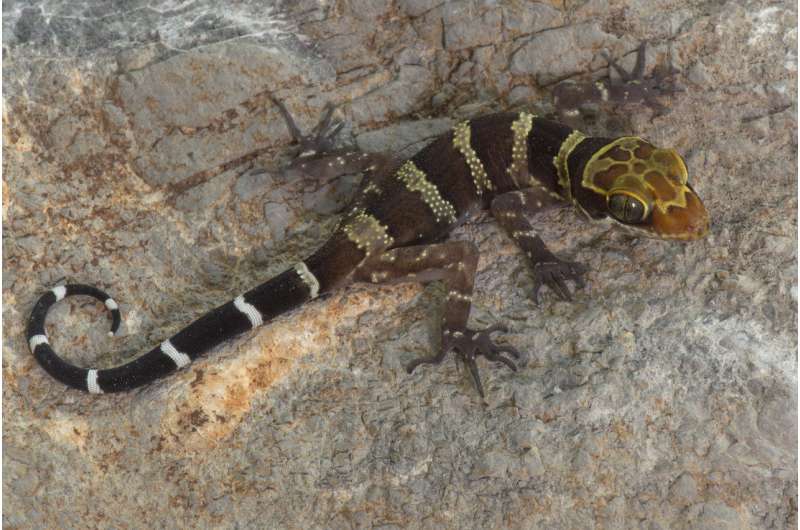How can we reduce the environmental cost of cement?

Look around you and you will likely see cement in use. That is, unless you are reading this on a mobile device out in an entirely natural landscape – in which case, stop and enjoy your surroundings!
Cement is a key ingredient of concrete, which is then used for roads, dams, hospitals, schools, houses and many other constructions besides. As nations develop and industrialise, this directly drives cement consumption for infrastructure development.
So where does all this cement come from? The answer is rocks – mostly limestone, to be more specific.
This sedimentary rock is a key ingredient of cement products, and is common in most countries. Under certain climatic and geological conditions, however, limestone erodes to form karst terrains – striking landscapes characterised by intricate cave systems, underground rivers and steep, jagged hills jutting sharply up from the ground and often covered in the last remaining natural vegetation for miles around.
Karst landscapes are highly biodiverse and often harbour unique species found nowhere else on earth, or else act as final refuges for species that have been lost from the surrounding landscape along with their habitat. They are also often threatened by limestone quarrying.
Human demand for cement appears to be insatiable, and looks set to continue on its current upwards trajectory. It is therefore imperative that areas of high biodiversity, both in karst landscapes and other areas, are identified, protected and appropriately managed.

For the last year, Fauna & Flora International (FFI) has been working with LafargeHolcim, the largest cement producer in the world, to improve its biodiversity management practices, with a special focus on karst landscapes.
The work involved reviewing the company's biodiversity management plans and providing recommendations to the quarry sites which have then been used to inform LafargeHolcim's group-wide approach to biodiversity management.
Our recommendations focused on the need to identify sites across the group that are of high biodiversity value – that is, those with globally or nationally important biodiversity – and to prioritise management efforts and resources on these areas. Recommendations also focused on how to gather the right biodiversity information to inform management actions that will address any impacts by the company on important biodiversity. We have stressed the need to avoid damage to important features of karst for biodiversity such as caves, springs and underground rivers, as well as setting out what steps must be taken if impacts are unavoidable.
FFI is pleased that LafargeHolcim is integrating our recommendations into their biodiversity policy and management systems, and hope to see them translate into practice at the site level for tangible positive results for the species that live there.
A responsible company can aim to improve its impacts on biodiversity within its quarry area, however there is also a role for sector bodies (such as the Concrete Sustainability Council and the Global Cement and Concrete Association) as well as local and national governments to ensure proper planning and allocation of mining licences that takes into account environmental and social considerations from the start, protecting areas of highest biodiversity and ensuring that only responsible companies are granted licences.
This planning also needs to look at the wider landscape, and how proposed activities might affect ecosystems and biodiversity. This point is crucial; we have seen far too many examples of poorly planned infrastructure, especially long distance and linear constructions, that can have a devastating effect on biodiversity over vast landscapes, fragmenting pristine habitats, increasing road kill, and opening access to land, resources and wildlife that were once hard to reach.
FFI is working to ensure that extraction activities and planning of infrastructure considers and mitigates direct and indirect impacts on important biodiversity and ecosystem services, and is working in sensitive and threatened karst landscapes across Asia.
Provided by Fauna & Flora International



















